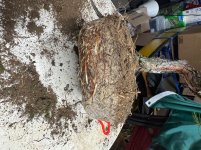pandacular
Masterpiece
Over the past several years, I have been working more and more in my mentor’s garden, and I plan to document that work here. I met my mentor in the club, of which she is a longtime member, and we fast became friends. She lived in my old neighborhood too, so it made helping out a lot easier.
One of my central mantras is to focus on working on great trees, not owning them. My mentor has a significant collection of legacy trees, many started by her own mentor, who was one of the pioneers of bonsai in the region—so many that there is no shortage of work to be done. Being 50 years my elder, it was important to both of us that we work together to ensure these trees are handled properly into future generations. A true mutually beneficial relationship, and that’s before accounting for our friendship.
One of my central mantras is to focus on working on great trees, not owning them. My mentor has a significant collection of legacy trees, many started by her own mentor, who was one of the pioneers of bonsai in the region—so many that there is no shortage of work to be done. Being 50 years my elder, it was important to both of us that we work together to ensure these trees are handled properly into future generations. A true mutually beneficial relationship, and that’s before accounting for our friendship.









